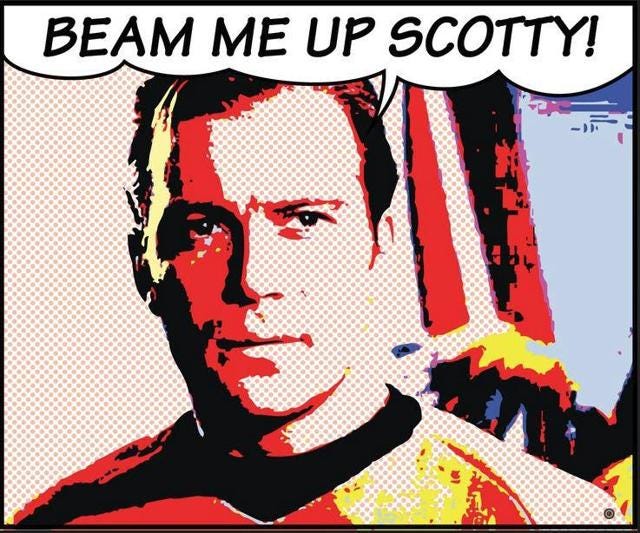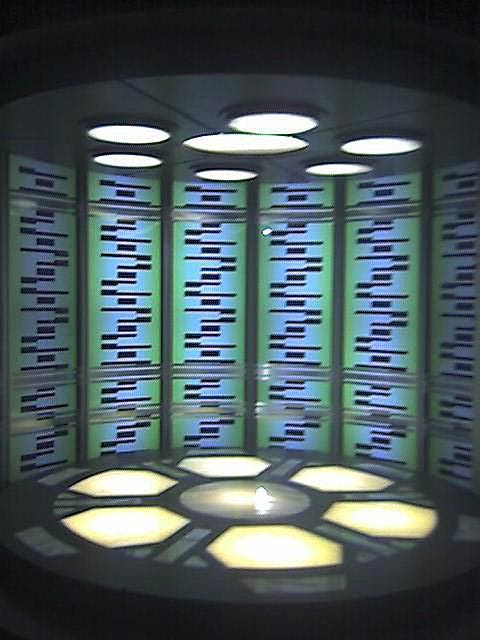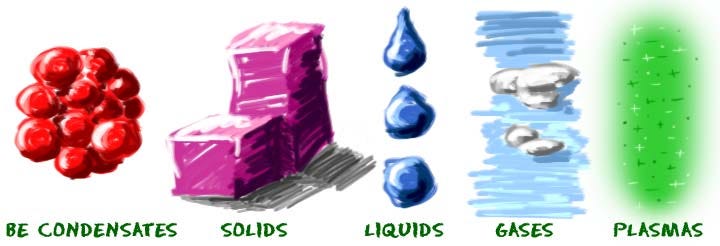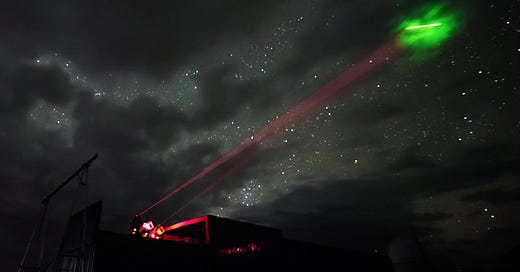"Beam Us Up, Scotty" - Is Teleportation real?
Physics of Teleportation explained...
The secret impresses no one. The trick you use it for is everything. - Alfred Bordon, The Prestige
Greetings, fellow Bohron
“Beam us up, Scotty”
In numerous Star Trek episodes, Captain Kirk commands his chief engineer Scotty whenever he wants to be teleported back to his starship Enterprise. “I canna' change the laws of physics, Captain!”, he often replies.

Teleportation is the process of transferring an object from one point to another without traversing the physical distance between the two points.
Of course, you can’t change the laws of nature. But what if you don’t understand them completely? Can you disappear from one location and appear somewhere else in a blink of an eye? Let’s find out.
Teleportation in Scifi

My favourite use of teleportation in movies is Nicola Tesla’s teleportation machine from The Prestige. Magician Robert Angier(Hugh Jackman) uses the machine to pull off a teleportation trick invented by his rival Alfred Bordon(Christian Bale) who uses his twin to perform the original act. However, unlike real teleportation, Tesla’s machine duplicates objects.

In The Fly(1958), while using his transportation machine, the atoms of a scientist mix with those of a fly, slowly transforming him into a monstrous hybrid. In the Star Trek series, a machine called Transporter converts objects into energy and send the beam to the target location where it “dematerializes” into the matter.
Quantum Entanglement and EPR Experiment

In 1935, physicists Albert Einstein, Boris Podolsky and Nathan Rosen(EPR) wrote a paper namely "Can Quantum-Mechanical Description of Physical Reality be Considered Complete?" in which they used what is known as Quantum Entanglement to disprove the notion that Quantum Mechanics completely describes the physical reality of our universe.
Consider two particles A and B whose initial states are independent of each other. They come close, collide and move far apart. After the collision, if we measure the momentum of A, then from the principle of conservation of momentum(which states that the combined momenta of the system remain constant throughout the process), we instantaneously know the momentum of B without even measuring it.

This is because after the two particles interact, they become ‘entangled’ in the process. Instead of a system of two independent particles, it becomes a single two-particle system. So affecting the particular properties of one particle instantaneously affects those of the other no matter how far apart they are.
This “spooky action at a distance” is known as Quantum Entanglement.
It turns out that this bizarre quantum phenomenon is our best bet to achieve the dream of teleportation one day. The good news is, we have already succeeded in teleporting photons and even a whole bunch of atoms!
Quantum Teleportation

In 1993, a team of researchers at IBM led by Charles Bennet wrote a paper “Teleporting an Unknown Quantum State via Dual Classical and Einstein-Podolsky-Rosen Channels” in which they proposed quantum teleportation. They demonstrated that it was possible to teleport atomic particles using entanglement following EPR’s approach.
Quantum Teleportation is the transfer of quantum information from a sender(known as “Alice”) at one location to a receiver(known as “Bob”) at another.
Contrary to sci-fi movies where there is a physical transfer of a particle, quantum teleportation transfers only the information contained within the particle. This is useful since it's the information about an object that we are interested in. Once we can extract it, we can transfer it to another location and reconstruct the exact replica of the object.
How does Quantum Teleportation Work?

The quantum state of an atom is a description of its physical properties such as its energy, position, velocity and momentum.
Say you want to teleport information(or a quantum state) from particle A to particle C. Bring in a new particle B which is entangled with C. Let B and A come in contact so that through a process, the information of A is transferred to B. This causes A and B to become entangled. But B and C were already entangled due to which the information of A gets communicated to C through B. Since the information within A and C is identical, we can say that A has been teleported to C.

Note that unlike Angier’s clones in The Prestige, this technique doesn’t allow you to duplicate an object without destroying the original. The original object has to die while being teleported from one location to another. This is nature’s price for pulling off this incredible magic trick.
Teleportation Without Entanglement
Apart from the four common states of matter(never forget plasma), there exists a fifth state of matter known as Bose-Einstein Condensate(BEC). BEC was first predicted by Albert Einstein in 1924 after reading a paper written by Indian physicist Satyendra Nath Bose.
BEC is formed when a gas of extremely low density is cooled to temperatures near absolute zero(which occurs at 0 K or -273.15°C). At such low temperatures, all the atoms tumble down to their lowest energy states and lose the properties which they possess under ordinary conditions. They lose their individual identities, each acts the same way as the other, behaving like a single giant ball of atoms.

In 2007, researchers from the Australian Research Centre for Quantum Atom Optics and Australian National University proposed an entirely new way of teleportation without using entanglement. Here is how it works:
A laser beam of atoms is incident upon a collection of atoms in a supercold BEC state. This causes the atoms of the beam to fall down to the lowest energy states like that in atoms of the BEC state. This releases energy in form of coherent photons of light within which is embedded all the information that describes the original laser beam. This emitted beam can be sent to the target location thus effectively teleporting the original beam of atoms.

Achievements and Timeline
One of the first initial successful attempts to achieve quantum teleportation happened in 1997 at the University of Innsbruck, Austria when a pair of entangled photons were generated and the information from one of them was teleported to the other.
A similar feat was achieved in 1998 at Caltech, Pasadena when the quantum state of one photon was teleported to a photon one meter apart through a third party called “Victor” which plays a role similar to that of particle C as described above.

In 2004, quantum teleportation of photons was achieved over a distance of 600 meters using a fibre optic cable beneath the river Danube in Vienna, Austria - a world record at that time.
Till then, quantum teleportation could be achieved only using photons. A major breakthrough came in June 2004 when physicists at the National Institute of Standards and Technology(NIST), Washington D.C. entangled beryllium atoms and transferred the quantum states of one to the other using laser beams with a success rate of 78%.
In 2006, for the first time in history, teleportation between light and matter was realized. In a collaboration between Neils Bohr Institute, Denmark and Max Planck Institute for Quantum Optics, Germany, scientists entangled a light beam with a magnetic gas of caesium atoms. Using laser beams, the quantum state to be teleported was encoded in the light beam. This information was teleported to caesium atoms over a distance of half a yard.

The current world record was achieved by Chinese scientists in 2017 when they teleported the quantum state of a photon from Tibet to a satellite in orbit 870 miles above the surface.
Future
Is the teleportation of macroscopic objects possible? Assume that one day we are able to realize the technology of teleporting living beings. This raises a very thought-provoking and terrifying philosophical question. Will the “soul” also move with the body? No one knows for sure. But do think about it.
Quantum Entanglement is one of the most bizarre phenomena in nature and we have only just begun playing with it. Manipulating atoms at such a small scale is very difficult. Maintaining and working with the BEC state is also a very delicate affair. All we can hope for is the development of some out-of-the-box methods and improvement in the existing technology.
There have been enormous strides in our quest to teleport macroscopic objects one day. According to Michio Kaku, it may become possible for us to teleport complex organic molecules within a few decades, but for teleporting human beings and spaceships, we will have to wait for several centuries.
Sources:
Ch 4 - Teleportation, Physics of the Impossible, Michio Kaku
Ch 13 - Quantum Reality, Quantum, Manjit Kumar
Quantum teleportation - Wikipedia
Caltech physicists achieve first bona fide quantum teleportation - Caltech
NIST Demonstrates 'Teleportation' of Atomic States for Quantum Computing - NIST
The Top 6 Physics Stories of 2006 - Discover
Chinese Scientists Just Set the Record for the Farthest Quantum Teleportation - SPACE
Teleportation method proposed by Australian scientists - Phys.org





Excellent article